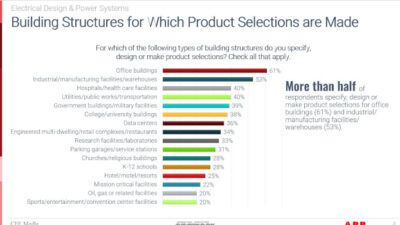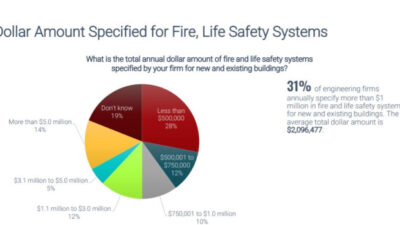UPS technologies vary in physical size, weight, form factor, capacity, supported input power source, topology, and cost.

The purpose of an uninterruptible power supply (UPS) is to provide a clean, reliable, stable supply of power to the load. The term “load” represents any electric device that requires power to operate. For example, in a manufacturing site, factory floor equipment such as motor contactors, adjustable speed drive controls, computers, programmable logic controllers, and robotics are all susceptible to shutdowns or damage due to power problems.
Operators can either install smaller distributed UPS systems for individual pieces of equipment inside the facility, or can rely on larger site-wide UPS protection.
UPSs vary greatly in physical size, weight, form factor (e.g., stand-alone versus rack-based), capacity, supported input power source (e.g., single-phase versus three-phase), topology (static UPS versus rotary UPS), and cost.
There are two broad categories of UPS: static and rotary. Within each category, several contrasting design topologies are prevalent in the marketplace. Static UPSs, which are much more common, are called “static” because, throughout their power path, they have no moving parts (although they do have auxiliary moving parts, such as cooling fans).
The rotary UPS is called “rotary” because rotating components (such as a motor-generator) within the UPS are used to transfer power to the load. The true definition of a rotary UPS is any UPS whose output sine wave is the result of rotating generation.
UPS battery backup time, or runtime, can vary greatly depending upon the need of the application. Runtime is calculated based upon the size of the load and the available battery capacity. Static UPS battery systems are generally sized to allow enough time, during an outage or disturbance, to support the load while the power source shifts from utility to a standby generator. If the generator(s) fails to come online, the UPS can be configured with enough battery runtime and management software to allow for an orderly shutdown of the load.
Static UPSs, regardless of their internal architecture, will include, at a minimum, the following electrical components:
- A battery: Provides the stored energy to power the load when a utility fault occurs
- An inverter: The battery outputs dc and the load accepts ac. The inverter converts dc power to ac power. The quality and sophistication of the inverter varies greatly depending upon type of UPS.
Understanding Topologies
Here are several of the most popular static and rotary UPS topologies available in the marketplace today:
The standby UPS (static): The standby UPS is the most common type of UPS used for personal computers. Figure 1 illustrates how the power coming from the utility is filtered as it moves through the UPS and over to the load. A surge protector also is included to safeguard the load from surges. Should the utility fail, the UPS transfer switch instantly selects the battery/inverter as the backup power source (as illustrated by the dashed line). The inverter only begins to operate when the power fails, hence the name "Standby." High efficiency, small size, and low cost are the main benefits of this design.
The line interactive UPS (static): The line interactive UPS, illustrated in Figure 2, is the most common design used for small business, Web, and departmental servers. As opposed to the standby UPS, the inverter within the line interactive UPS is always in operation. Under normal operation, the power flows directly through the inverter and on to the load.
When the input power fails, the transfer switch opens and the power flows from the battery to the UPS output via the inverter. The sophistication of the filtering (via the inverter) is superior to that available in the standby UPS.
The line interactive UPS is also capable of providing voltage regulation. This is an important feature when unstable voltage conditions are frequent. Without voltage regulation, the more frequent instances of battery usage will cause premature battery failure. Line interactive UPSs are the dominant type of UPSs in the 0.5 to 10 kVA power range.
The double conversion on-line UPS (static): A double conversion on-line UPS (Figure 3) derives its primary source of power from the batteries via the inverter. Under normal operation, the UPS converts the incoming utility power from ac to dc via the rectifier, which provides a steady float charge to the batteries.
Therefore, the line power is used, in essence, to supply the battery charger and not to directly power the load. The inverter converts dc from the rectifier to clean ac for the critical load. The UPS delivers a filtered, clean sine wave (low-voltage distortion) to the load. This is the most common type of UPS above 10 kW.
If power from the utility line is cut off, the batteries, which are charged to capacity, become the power source that supplies the inverter which, in turn, provides the required ac output to the load during the outage.
The benefit of this design is that the load experiences no transfer time from one power source to another (the power comes through the inverter and continues to come through the inverter despite the change in power source). Should the inverter experience an internal failure, power is delivered via the static bypass switch path. Double conversion UPSs can be operated in parallel, and are capable of supporting loads up to multiple megawatts.
The delta conversion on-line UPS (static): Similar to the double conversion on-line design, the delta conversion on-line UPS, under normal operation, contributes power to the inverter output (Figure 4). However, a delta converter component is present to control the input power characteristics and to regulate charging to the battery system.
Because delta conversion on-line designs provide dynamically controlled, power factor corrected input, without the inefficient use of filter banks associated with traditional solutions, normal operation results in higher efficiency (up to 97%).
Under conditions of ac failure or power disturbances, this delta conversion on-line design exhibits behavior identical to the double conversion on-line (see above). Delta conversion on-line UPSs can be operated in parallel to support loads from 10 or more kilowatts to multiple megawatts.
Motor-generator/battery UPS (rotary): When the utility power quality (voltage and frequency) falls within an acceptable range, the motor component of the rotary UPS is driven directly from the utility. That motor then provides mechanical power to the generator component of the motor-generator (Figure 5) to support the critical load with clean power. Also, the rectifier/inverter unit operates in stand-by mode during the time the utility is stable. That is, the rectifier is in “battery float” mode (the batteries get charged).
When utility voltage and frequency parameters fall outside of preset limits, then the rectifier/inverter unit begins to provide controlled power to the motor which is coupled directly to the generator to support the critical load. When a blackout occurs, the battery bank provides necessary power via the inverter to the motor-generator to support the load. The stored energy within the batteries provides sufficient ride-through to sustain the load until the standby generator (outside of the UPS) comes up to full operating speed.
Engine-coupled UPS (rotary): The components of an engine-coupled rotary UPS include the following: a motor-generator, a choke, a flywheel, a mechanical clutch, and a diesel engine. Under normal operation, the utility feeds power to the critical load via the filter (made up of the choke and motor). The same motor also provides the necessary power to the flywheel to retain kinetic storage of energy in case of emergency.
During failure mode, power is supplied by the flywheel to the motor-generator unit, which in turn supports the critical load for a few seconds before the diesel engine runs up to full speed. The clutch is then engaged to provide mechanical power to the motor-generator to supply continuity of power to the load (Figure 6).
The static UPS predominates at power levels of 500 kW and below. In the 200 to 500 kW range, rotary UPSs begin to appear in niche applications (e.g. military and heavy industry). In environments where 500 kW to multiple megawatt UPSs are required, both static (of the double conversion and delta conversion type) and rotary UPSs are present.
Depending on purpose, method of deployment, and load being supported, certain UPS architectures can be more practical than others. No single UPS architecture, however, is ideal for all applications.
— Bouley is a senior research analyst at APC by Schneider Electric’s Data Center Science Center. He has published articles focused on data center physical infrastructure, and he has authored several white papers for both APC by Schneider Electric and The Green Grid.



